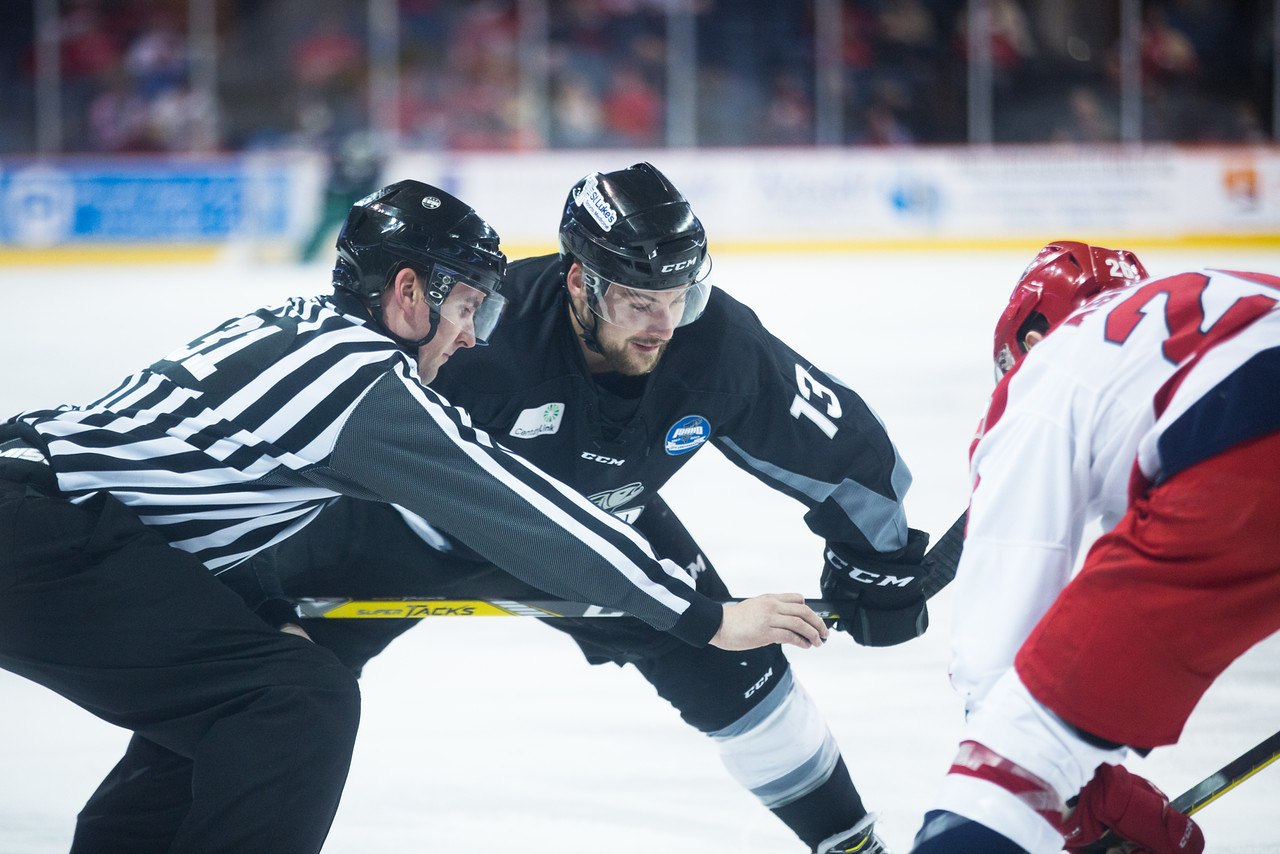For years the Detroit Red Wings were the gold standard for playoff qualification.
From 1990 to 2016, a stretch of 25 seasons, the Red Wings reached the NHL playoffs and spring hockey was a fact of life in “Hockeytown.”
That streak, along with Joe Louis Arena, came to an end in 2017. Detroit missed the playoffs and Hockeytown has given way to a little-known hockey town that’s better known for blue turf and football high jinks.
But in Boise, Idaho the playoffs are a fact of life for the ECHL’s Idaho Steelheads.
Since their founding in 1997 the Steelheads have never missed the playoffs. They made their 20th consecutive trip to the postseason — which spans across two leagues — this spring, and it’s now the longest active playoff streak in North American professional hockey.
“It’s something we’ve always taken pride of in Idaho,” Steelheads coach and general manager Neil Graham said. “That winning tradition is something we want to maintain, and it’s something that we use to build our team. If you come to Idaho, you know you are going to win games and you know you are going to be given every chance to advance your career.”
During the streak the Steelheads have compiled 89 playoff wins, hoisted the Kelly Cup twice as ECHL champions (in 2004 and 2007), and — perhaps most importantly — have thrived as a business in a minor-league hockey landscape where AA-level teams seem more likely to fold or relocate in some capacity before their 10th birthday.
That’s why the Dallas Stars have maintained a close relationship with the Steelheads since the 2003-04 season. With the exception of the 2004-05 season — because of the NHL season-long lockout — the Stars and Steelheads have maintained an affiliation. Last summer it was extended through the end of the 2017-18 season, and it’s expected to be extended once again before the agreement expires.
“They do a great job down there,” Stars assistant general manager Scott White said during this season. “Whether it’s been Neil (Graham) or (previous head coach) Brad Ralph, and I could keep listing guys down there, they run an organization and a team that we would want our players around at that level.”
That’s high praise for Graham, who at 32 is the second youngest coach in the ECHL and just completed his second season as the head coach in Idaho.
“I think my confidence grew this year,” Graham said. “You are still going to make mistakes, and the quicker you learn that the easier it is to grow from them. Because of that, I think my decision making improved this year and my management within the game got better.”
Graham also saw improvement as a general manager.
In the ECHL recruiting players and building a roster in the offseason are the foundation for success. Similar to a college coach, the work done on the phones and away from the ice are the driving factors for an eventual playoff run.
“We had a lot of trades and movement in my first year,” Graham said. “This year we only had one trade that was player for player. If you look at our roster, 12 of our 14 forwards on the playoff roster we had signed and recruited in the summer. Six of our eight (defensemen) we had signed and recruited in the summer.”
That helped lay the groundwork for a 43-22-7 regular season for Idaho. The Steelheads finished third in the Mountain Division — arguably the toughest in league — and had eight ECHL-contracted players earn AHL call-ups (five with the AHL-affiliated Texas Stars).
The Steelheads season came to an end in the first round of the playoffs against the Colorado Eagles in five games.
The backbreaker came in Game 4 where Idaho was minutes away from tying the series at two games a piece, but Colorado scored three goals in the final four minutes of regulation to force overtime and then won 6-5 to take a 3-1 series lead.
“The postseason was disappointing for us,” Graham said. “We had a game plan against Colorado and we executed it quite well in the first two games. We won and then lost in overtime in Game 2. And Game 4 was a terrific hockey game for 57 minutes. We hadn’t really allowed a shot in the third period up until that, so that was tough.”
It was a tough ending and in many cases ECHL coaches have to start over after each season. Players in the ECHL are typically on one-year contracts, so roster turnover is the norm and several of the Steelheads top ECHL-contracted players (Joe Faust, Anthony Luciani, Jefferson Dahl, and captain Rob Linsmayer) could be hot commodities in ECHL free agency.
He can’t be sure, but Graham is hopeful he’ll have much of his core back next season.
“We had our exit meetings earlier in the week,” Graham said. “Kind of the consensus feeling from the guys is that if they’re in the ECHL, they only want to be in Idaho. Europe is alays going to be a tempting option. But I do think we we’ll see a decent amount of returners.”
Idaho might get more of a boost from it’s NHL and AHL affiliate next season as well as the Steelheads try to push the playoff streak to 21 seasons.
Thanks to injuries in Dallas and in the AHL, several players that were expected to be ECHL contributors this season spent most of the year with the Texas Stars and Dallas goalie prospect Landon Bow was the only NHL prospect to spend extended time housed in the ECHL.

Leave a Reply
You must be logged in to post a comment.